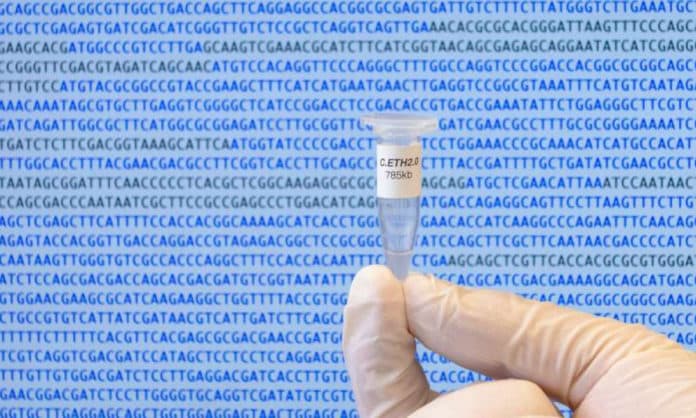World’s First Computer-Generated Bacterial Genome
National Center for Biotechnology Information in America holds an International database containing genome sequences of all organisms around the world. Recently, a new member: Caulobacter thesis-2.0 – World’s first fully computer-generated genome of a living organism has been added to the database. This novel discovery has been made by scientists at ETH Zurich.
C. ethensis-2.0 is based upon the genome of a well-studied and harmless freshwater bacterium, Caulobacter crescentus, and is found naturally in spring water, rivers and lakes around the globe. It doesn’t lead to any diseases. C. crescentus can also be a model organism widely utilized in research labs to examine the life span of germs. 4,000 genes are contained by this bacterium’s genome. Scientists demonstrated that only about 680 of these genes are crucial to the survival of the species in the laboratory. Compounds with this minimal genome are viable under lab conditions.
Beat Christen – Professor of Experimental Systems Biology at ETH Zurich, and his brother, Matthias Christen set out to synthesize this genome from scratch as a continuous ring-shaped chromosome. The task is regarded as a true tour de force: The bacterial genome presented by the genetics pioneer Craig Venter was the
result of 10 years of work according to media reports. The project’s expense is thought to be 40 million in total.Venter’s team created an exact copy of a natural genome, ETH Zurich scientists altered their genome utilizing a computer algorithm. Their motivation was twofold: one, to make it simpler to produce genomes, and two to find answers to fundamental questions of biology.
To make a DNA molecule as big as a genome, scientists should proceed step by step. In the case of the Caulobacter genome, the scientists at ETH Zurich synthesized 236 segments, which they pieced together. Matthias Christen stated that- The synthesis of these segments isn’t always simple. Matthias Christen also stated that- DNA molecules not only possess the ability to adhere to other DNA molecules but depending on the sequence, they can also twist themselves into knots and loops, which can hamper the manufacturing process or render manufacturing impossible.
The scientists radically simplified the genome sequence without altering the actual genetic information in order to synthesize the genome segments in the easiest possible way and then piece together all sections in the most streamlined manner. There’s ample latitude for the simplification of genomes, because biology has for storing information, redundancies.
The algorithm developed by ETH Zurich Researchers makes use of the redundancy of the genetic code. Using this algorithm, the researchers computed the DNA sequence for construction and synthesis.
As a result, the scientists seeded many small alterations into the minimum genome, which in their entirety are, however, impressive: more than a sixth of all of the 800,000 DNA letters from the artificial genome were substituted, compared to “natural” minimal genome.
From a biological point, the rewritten genome is also interesting. Beat Christen added that- Their method is a litmus test to find out whether we biologists have correctly understood genetics, and it allows us to highlight potential gaps in our knowledge. Obviously, the rewritten genome can contain only information that the researchers have actually understood. Additional information that is situated in the DNA sequence, and has not yet been understood by scientists this information would have been lost in the process of producing the new code.
For study purposes, the scientists generated also and strains of bacteria that contained the naturally occurring Caulobacter genome segments of the new genome. By turning off certain genes in these bacteria, the researchers were able to check the functions of the genes. They tested each of the artificial genes in a multistep process.
In such experiments, the researchers found out that just about 580 of the 680 artificial genes were functional. Christen stated that- With the knowledge, they have gained, it will, however, be possible for us to improve our algorithm and produce a fully functional genome version 3.
Matthias Christen stated that- Even though the current version of the genome isn’t yet perfect, our work nevertheless shows that biological systems are constructed in such a simple manner that in the future, they will be able to work out the design specifications on the computer based on our objectives, and then build them, And this can be done in a relatively straightforward way, as Beat Christen emphasizes: What took ten years with Craig Venter’s approach, our small group achieved with our new technologies within the time frame of one year with manufacturing costs of 120,000 Swiss francs.
One of the possible future applications are microorganisms that could be utilized for the production of complex active molecules or vitamins in biotechnology, such as. The technology can be employed universally for all germs, not Caulobacter.
Beat Christen stated that- As promising as the research results and possible applications may be, they demand a deep discussion in society about the purposes for which this technology can be used and, at the same time, about how abuses can be prevented. It’s still not clear when the bacterium using an artificial genome will be generated –but it’s now clear that it can and will be developed. they have to use the time they have for intensive discussions among scientists and in society as a whole. We stand ready to contribute to that discussion, with all of the know-how they have.






























